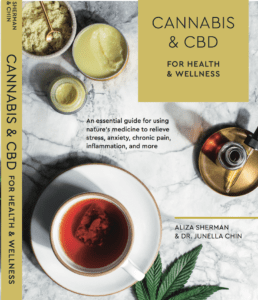Cannabinoids are why cannabis is medicine
The most well known cannabinoids in cannabis are THC and CBD, but there are others that contribute to the effects – and therapeutic properties – of the cannabis plant. Here are some common cannabinoids in cannabis and the therapeutic benefits they may have.
THC (Tetrahydrocannabinol)
THC is one of the few cannabinoids in cannabis with psychoactive effects, and it binds to CB1 receptors in the brain, releasing dopamine and other chemicals that create altered moods, perceptions, and cognition.
Potential Therapeutic Benefits: Reducing pain, reducing inflammation, easing nausea and vomiting, increasing appetite, controlling diarrhea, protecting brain cells, aiding sleep, increasing appetite, treating PTSD.
CBD (Cannabidiol)
Think of CBD as a complementary compound to THC but without the mind-altering aspects. The CBD products that are legally sold in most states and that are generally – but not always – legal to ship, are derived from the industrial hemp plant. Hemp is a variety of the species of plant, Cannabis sativa. In addition to CBD nutritional supplements and beauty products that are becoming popular in the marketplace, hemp is used commercially to make products such as paper, fabrics and textiles, construction materials, rope, and other goods.
Potential Therapeutic Benefits: Reducing pain, inflammation, reducing nausea, reducing seizures, aiding sleep, reducing anxiety.
CBN (Cannabinol)
CBN forms when THC degrades due to exposure to air and light. CBN is prominent in old dried cannabis flower. In large quantities, CBN could produce paranoia, something you might experience smoking low-quality, improperly stored pot.
Potential Therapeutic Benefits: Acting as a sedative, working as an antibiotic and antibacterial, reducing convulsions, stimulating bone cell growth, showing promise an analgesic.
CBG (Cannabigerol)
CBG is not psychoactive. It is considered the “Mother Cannabinoid” because it ultimately converts into other cannabinoids such as THC, CBD and CBC.
Potential Therapeutic Benefits: Treating glaucoma, fighting cancer, providing antibacterial properties, stimulating appetite, preventing bladder dysfunction, reducing inflammation including decreasing inflammatory bowel disease.
CBC (Cannabichromene)
CBC is another non-psychoactive cannabinoid that comes out of CBG. CBC is said to have anti-inflammatory properties that becomes more effective when combined with THC. CBC also has antibiotic and anti-fungal properties.
Potential Therapeutic Benefits: Fighting cancer, reducing pain and inflammation, promoting healthy brain function, stimulating bone tissue growth, acting as an antibiotic, inhibiting acne.
THCV (Tetrahydrocannabivarin)
THCV is said to be more psychoactive than its root compound, THC, but for shorter durations of time.
Potential Therapeutic Benefits: Suppressing appetite, reducing pain, reducing panic attacks, regulating blood sugar levels, reducing insulin resistance, helping with Alzheimer’s and Parkinson’s.
THCA (Tetrahydrocannabinolic Acid)
The A at the end of THCA signifies an acidic form of THC. THCA exists in a raw cannabis plant and to convert it into a form that can be absorbed into the human bloodstream and bind to receptors, it has to be heated or “decarboxylated.” The raw cannabis plant contains THCA and not THC, and that is why you don’t get high juicing raw cannabis leaves.
Potential Therapeutic Benefits: Reducing inflammation, protecting neurons in the brain, reducing nausea, increasing appetite.
Many of the different cannabinoids within cannabis work well together in what scientists call the “Entourage Effect.” When you hear people talking about using “whole plant” cannabis extracts, they are referring to the benefits of keeping the many compounds within cannabis together so they naturally interact. The opposite of “whole plant” extracts are isolates where a single cannabinoid is isolated. Experts think that kind of isolation doesn’t give you the full therapeutic benefit of all of the cannabinoids working together. Sounds right to us!











Trackbacks & Pingbacks
[…] improve your sleep for the long-term, look for personalized combinations of CBD and botanicals that are tailored around the set of factors affecting you. For example, you may need […]
[…] not forget gifts for our favorite four-legged friends this holiday season. All mammals have Endocannabinoid Systems which means even our pets can benefit from CBD for anti-inflammatory and anti-anxiety effects. Swap […]
[…] symptoms to easing the symptoms of menopause. Women are nourishing their bodies with much needed cannabinoids that help modulate hormones, boost immune systems, and promote overall better health and […]
Comments are closed.